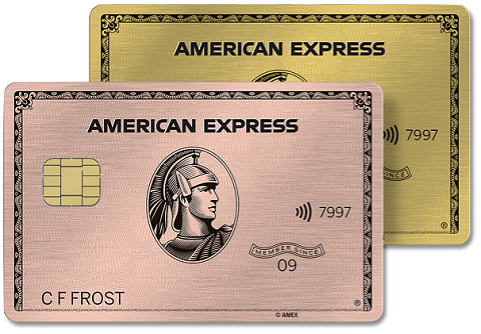Let’s be real. If you’re serious about the whole “miles and points” game, you’ve probably asked yourself this question at least once: Should I be earning American Express Membership Rewards points or Chase Ultimate Rewards points?
Both programs are super popular (and for good reason). They have strong transfer partners, solid travel portals, and credit cards that make earning easy. But they definitely shine in different ways, and which one wins depends a lot on how you travel.
So let’s break it down side by side.
How These Two Programs Work
American Express Membership Rewards
Amex Membership Rewards are super flexible. You can transfer points to 20 airline and hotel partners, or book travel directly through American Express Travel®.
Where Amex really stands out is its transfer ecosystem, especially with international carriers like ANA, Air France/KLM, and Singapore Airlines. That’s where we usually see those insane first-class redemptions and business-class sweet spots.
Chase Ultimate Rewards
Chase Ultimate Rewards are known for being super easy to use. Chase doesn’t have quite as many transfer partners as Amex, but the ones it does have, like World of Hyatt, United Airlines, and Air Canada Aeroplan, are great options.
You can also redeem through the Chase TravelSM portal for up to two cents per point (if you hold the Chase Sapphire Reserve® and up to 1.5 cents per point if you have the Chase Sapphire Preferred® Card), which makes it a great option for people who prefer fixed-value bookings over complicated award charts.
ICYMI: Chase launched Points Boost this year, letting you redeem points for more value on select flights and hotels through Chase Travel. Now that we’re past the Oct. 26, 2025 date, unused non-Boost points go back to a 1:1 ratio.
Earning Points: Amex vs. Chase
Both programs have some of the best credit cards in the game, but they reward different spending habits, so here’s a quick look at that.
Category | Amex Membership Rewards | Chase Ultimate Rewards |
Everyday spend | American Express® Gold Card earns 4x at restaurants (up to $50,000 per year, then 1x after that) and at U.S. supermarkets (up to $25,000 per year, then 1x after that) | Sapphire Preferred earns 3x on dining, select streaming services, and online grocery (excluding Target, Walmart, and wholesale clubs) |
Travel | American Express Platinum Card® earns 5x on flights (up to $500,000 per calendar year on flights booked directly with airlines or through American Express Travel® up to $500,000) | Sapphire Reserve earns 8x on all Chase travel purchases (and up to two cents per point in the portal with Points Boost) |
Business | American Express® Business Gold Card earns 4x on top categories where your business spends the most each billing cycle from six eligible categories (for the first $150,000, then 1x after that) — only the top 2 categories each billing cycle will count towards the $150,000 cap | IInk Business Preferred® Credit Card earns 3x on the first $150,000 spent on total purchases for these categories each year (then 1X per $1 after): shipping purchases, advertising purchases, internet, cable, and phone services, and travel |
No annual fee | Blue Cash Everyday® Card from American Express earns cash-back at U.S. supermarkets, U.S. online retail purchases, and U.S. gas stations (up to $6,000 per year, then 1%) | Chase Freedom Unlimited® earns 1.5x on everything |
👉 My Take: If you’re a foodie or frequent flyer, Amex’s bonus categories can pile up points quickly. But Chase’s partners are better for general travel and everyday spenders who want to keep things simple.
Comparing Transfer Partners
This is where things get a little spicy. Transfer partners can make or break your redemptions, especially if you’re aiming for premium cabins or crazy nice hotels.
Amex has 20 partners and Chase has 13 (at the time of writing). So, Amex wins in quantity, but again, Chase is super easy to use and also has some great sweet spots.
For example:
Amex to ANA can unlock insane business-class flights to Asia for as little as 75,000 points round-trip.
Chase to Hyatt lets you book luxury hotels with no dynamic pricing headaches.
👀 Pro Tip: Many Amex partners transfer instantly, but some (like ANA) can take a little longer. Chase’s transfers to Hyatt and United are often instant, which makes it easier to jump on last-minute availability.
Travel Portals vs. Point Transfers
This is where you might just have your “aha” moment.
Amex Travel: Points are worth around one cent each when redeemed directly. You can often get more value through airline transfers, especially during transfer bonuses.
Chase Travel Portal: Points are worth up to two cents each (depending on your card). That’s huge for people who prefer cash-like redemptions and instant rewards.
For example, if you were booking a $600 flight with Amex, you’d need 60,000 points through the portal. If you were booking that same flight with Chase (specifically the Sapphire Reserve), you’d need 30,000 points.
👉 If you love hunting for sweet spots, Amex is a great playground for you. If you’d rather just book the flight and move on, Chase makes it super easier.
Hotel Redemptions
Chase has Hyatt. That’s it. And honestly… that’s enough. Hyatt remains one of the best values in hotel programs, with fixed award charts and low redemption rates.
Amex doesn’t have Hyatt, but it does have Hilton, Marriott (via transfer through partners), and a few others. Hilton redemptions can be solid, but the value per point is usually lower.
My Take
If you love finding hidden sweet spots, business-class deals, and stacking transfer bonuses, Amex is your new BFF. They have more partners, but require a little more strategy to find the best redemptions.
If you want a clean way to book flights, love Hyatt, or just like seeing easy value from your points, Chase is tough to beat. It’s simple, flexible, and fast. Transfer partners are instant, and the portal has built-in value boosts.
And honestly? The real power move is having both. Pairing something like the Sapphire Preferred with the American Express® Gold Card gives you the best of both worlds.
At the end of the day, both of these programs are great for different reasons, and once you’ve been playing the points and miles game for a bit, you’ll likely need a stash from both programs — that’s where you’ll see the most flexibility.












